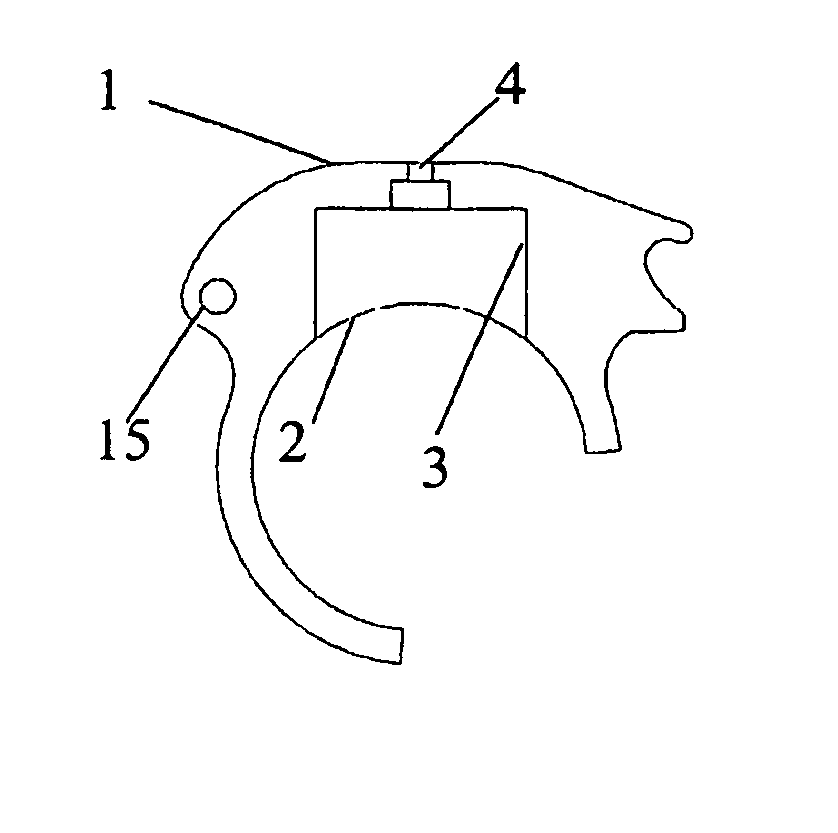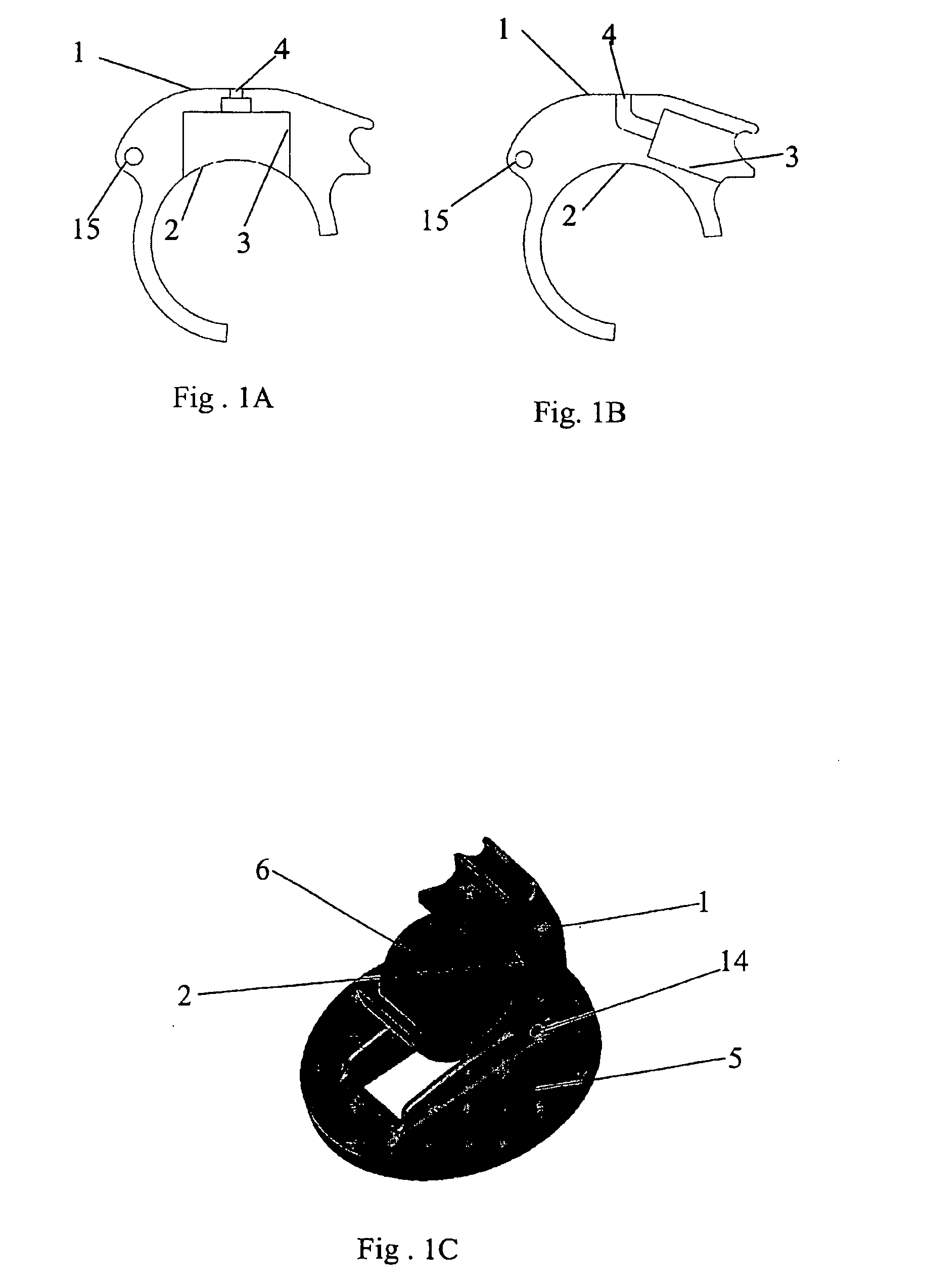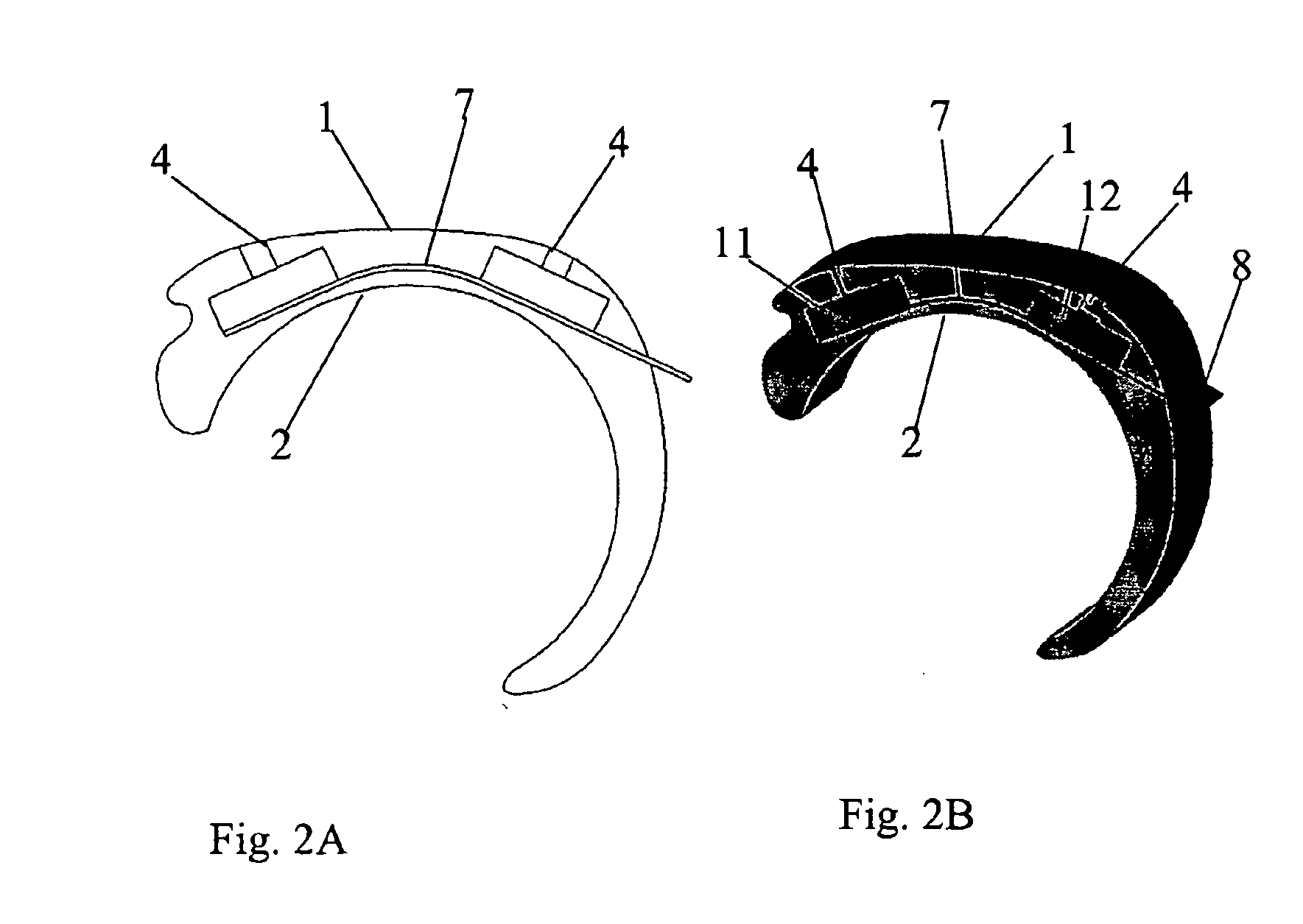Method for producing a hearing aid
a technology for hearing aids and hearing aids, applied in the direction of deaf-aid sets, electric devices, coatings, etc., can solve the problem of occupying space, and achieve the effect of less easy replacement of malfunctioning parts
- Summary
- Abstract
- Description
- Claims
- Application Information
AI Technical Summary
Benefits of technology
Problems solved by technology
Method used
Image
Examples
Embodiment Construction
[0028] The battery lid shown in FIGS. 1A and 1B has a first side 1, which is facing the exterior and a second side 2 which faces the interior of the casing (not shown). The second side 2 is usually shaped to snugly fit the curvature of the battery. This can be seen in FIG. 1C, where the battery 6 is shown. In the embodiment of FIGS. 1A and 1B a recess 3 is shaped between the two surfaces 1 and 2. In the embodiment of FIG. 1A the recess is open toward the interior surface 2 and according to the embodiment of FIG. 1B the recess is sideways open and in both cases a microphone is insertable in the recess 3. From the bottom of the recess 3 a canal 4 is formed, which allows sound from the outside to enter the microphone port.
[0029] In FIG. 1C the battery 6 and battery lid is shown in perspective view along with a faceplate part 5. In the figure the lid is shown in the open position, and the material between the first surface 1 facing the surroundings and the second surface 2 facing the i...
PUM
| Property | Measurement | Unit |
|---|---|---|
| Attenuation coefficient | aaaaa | aaaaa |
Abstract
Description
Claims
Application Information
 Login to View More
Login to View More - R&D
- Intellectual Property
- Life Sciences
- Materials
- Tech Scout
- Unparalleled Data Quality
- Higher Quality Content
- 60% Fewer Hallucinations
Browse by: Latest US Patents, China's latest patents, Technical Efficacy Thesaurus, Application Domain, Technology Topic, Popular Technical Reports.
© 2025 PatSnap. All rights reserved.Legal|Privacy policy|Modern Slavery Act Transparency Statement|Sitemap|About US| Contact US: help@patsnap.com



